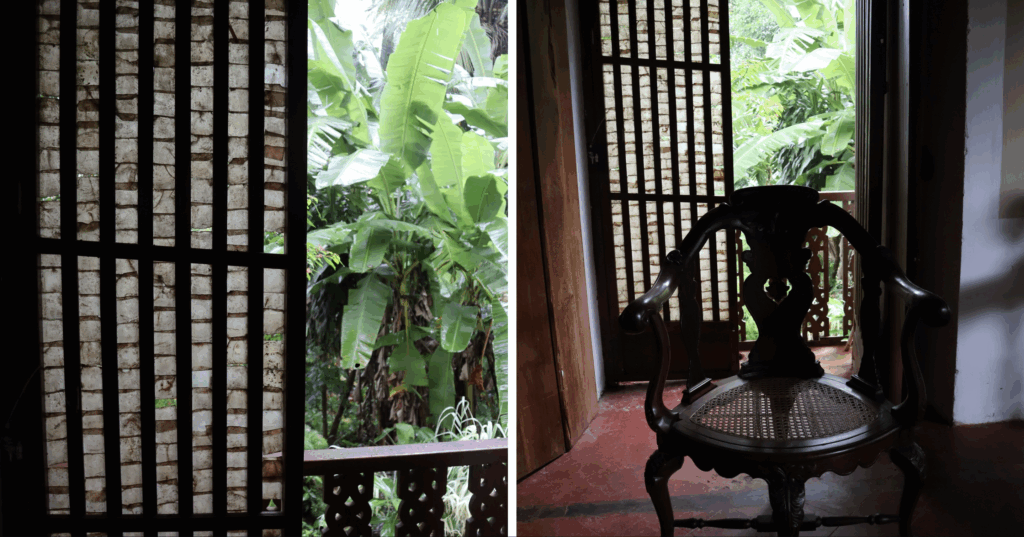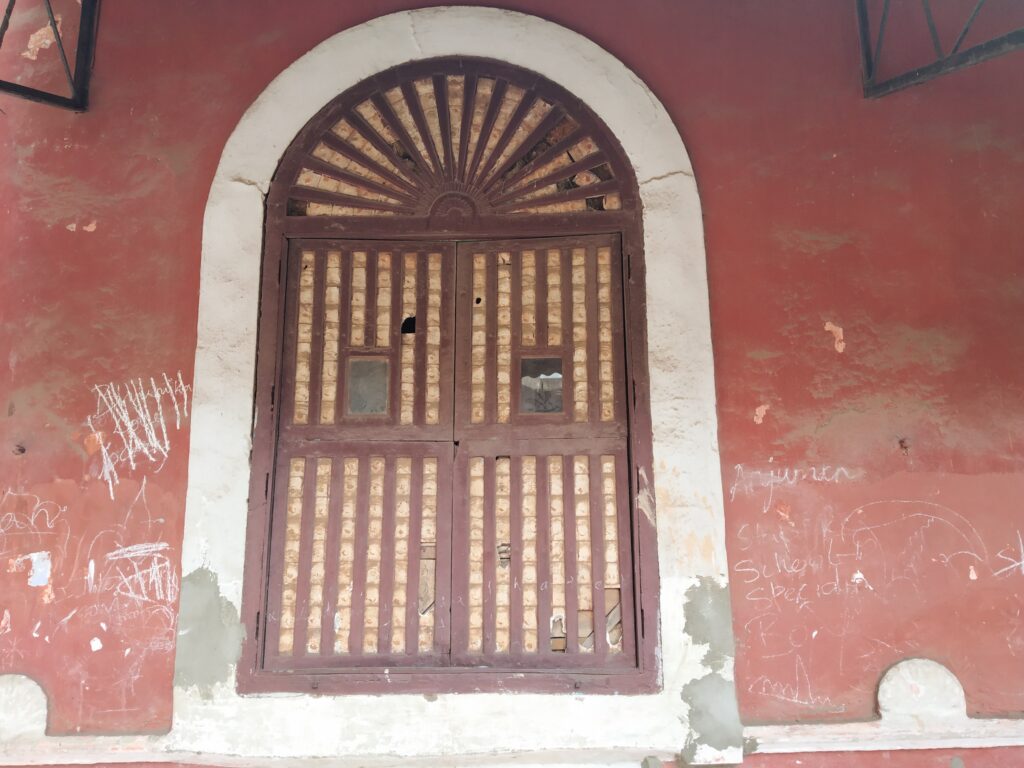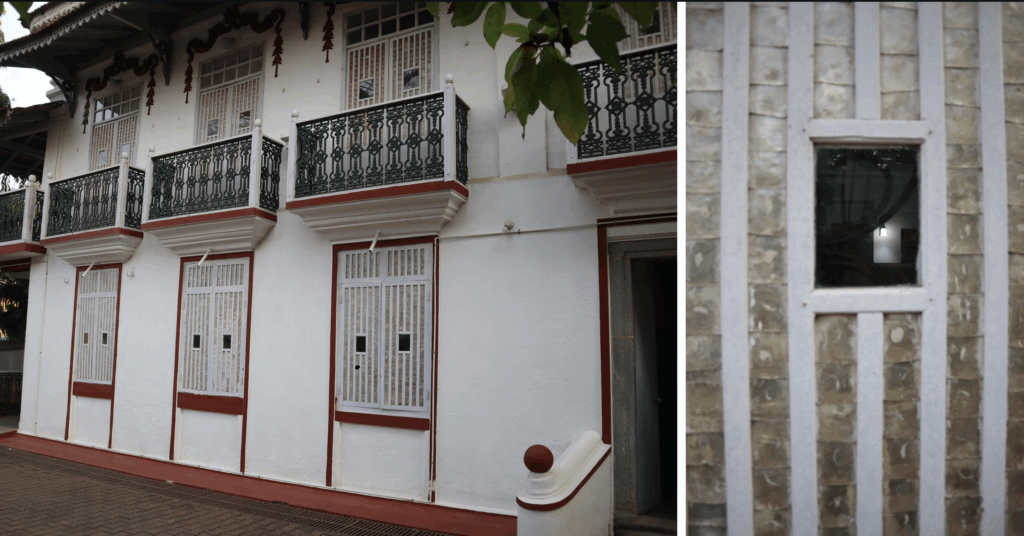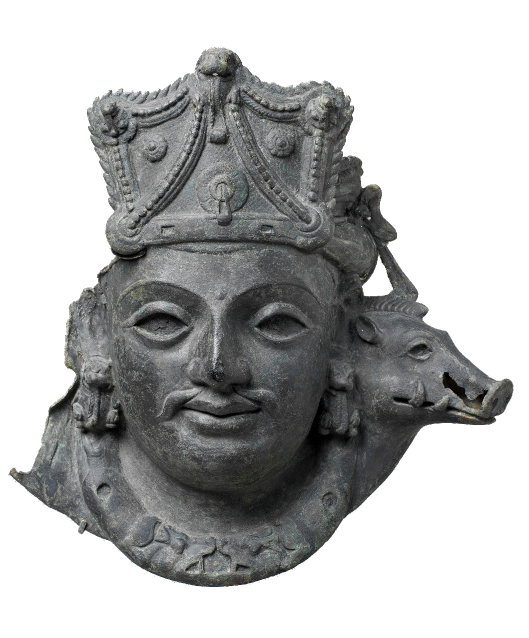PERSPECTIVES
The Vanishing Legacy of Goa’s Oyster Shell Windows
My ancestral home has two silent guardians. They have protected four generations of the Lobo family from the ravages of weather, be it Goa’s intense monsoons or its blisteringly hot summers. Our oyster shell windows on the balcão (balcony) have stood tall through it all.
Such windows are a unique architectural feature of old Goan houses. The ones that survive, some at least 400 years old, range from grand colonial mansions to more modestly-sized homes owned by affluent Catholic families.
What makes the wood-framed windows of these houses so special is that their panes are made from mother-of-pearl or nacre. Pieced together from locally-sourced shells, they are colloquially referred to as calva chi zonellam or capiz.
Oyster shell windows have pearly, translucent white panes with certain spots that glint in the sunlight. But, only from the outside. Once you are indoors, these panes do their job, shielding the house from the harsh glare of the sun. While they keep the rooms cool, they also allow diffused light to filter through.

The windowpane oyster (Placuna placenta) that lives in brackish coastal waters is an edible bivalve mollusk. But, it has always been valued more for its shimmering shell. They are a “striking feature of Goan architecture,” writes author and marine biologist Sangeeta M Sonak in Marine Shells of Goa. She explains that nacre waste — the discarded shells of the mollusks — are believed to filter out harmful UV rays when used on external windows and doors.
In old Catholic neighbourhoods in Goa, it is easy to spot many homes proudly displaying these shell windowpanes. To highlight them, the wooden frames are usually painted a bright blue, green, or yellow. Some oyster shell windows and doors also come with small lookout panes made of clear glass, used as peepholes.
When the shells aren’t cleaned regularly, which is a delicate task, they acquire a brown patina over time and can get discoloured.
The exact origins of these windowpanes are not known, but they are mentioned in the 1887 travel account titled The Voyage of Francois Pyrard of Laval. Pyrard, a French traveller who lived in Goa between 1608 and 1610, mentions how they were constructed, using thin, polished, lozenge-shaped oyster shells.
Skilled artisans, most likely from the Chari community known for their carpentry skills, would have had to soak the shells in water before cleaning them, ideally with a dilute acid solution, before they were shaped and polished. Then would come the hard part — stacking these wafer-thin pieces so that they’d overlap (but not too much!) to create the delicate panes. These would then be fitted between the slats of the window frames, made from saltwater-treated teak that was resistant to decay.
Another 2025 book, From the Old Continent to the World Portugal leads Europe into the Modern Age, refers to such oyster windows as ‘carepa’ windows. It states that they represent a fusion of Portuguese construction methods with influences from distant regions, including southern China and Macao. Antique oyster shell windows can be spotted in parts of Diu and in Vasai (former Portuguese colonies), and the Philippines and Indonesia, even today.

“Windowpane oysters were historically used much before the discovery of glass in architecture. They were in use much before the Portuguese came [to Goa]. During my research [into oyster shells], I read that the Portuguese would export these oyster shells [from Goa] to Brazil in the 16th century,” says Baban Ingole, retired chief scientist of the National Institute of Oceanography (NIO) in Goa.
Independent researcher and writer Heta Pandit, who authored Stories from Goan Houses, believes the use of oyster shell windows would have become commonplace in Goa with conversions to Christianity and the increased need for privacy with changes in lifestyle. “Most houses, until the end of the 19th and the beginning of the 20th century, were small, modest and free of embellishments. They had small windows, either at floor level or, at a height, way above the line of sight,” Pandit tells me. As big windows became part of Goan Catholic homes being built, there was a need to cover them with something. “Glass was extremely expensive and clear glass did not suit the purpose of giving house-owners privacy. Pearl fishing, on the other hand, was a prolific industry and the mother-of-pearl shell was a by-product of this industry,” says Pandit.
The windows didn’t just block the sun, but shielded homeowners from curious onlookers, back then and today. Nowhere is this more evident than in Fontainhas — Goa’s Latin Quarter, now overrun with tourists.

In recent decades though, windows made from this nature’s alternative to glass have become a cherished but vanishing aspect of Goan architecture. The collection of oysters was banned in 2005, under the Wildlife Protection Act 1972, when over-harvesting had nearly exhausted this once abundantly available resource.
Pollution and increased marine traffic also took their toll. Ingole says chemicals and toxins dumped in the sea caused a massive drop in oysters reproducing and barges, dragging the ocean floor, disturbed their habitat.
But existing windows continue to stand if cared for. At the restored Palácio do Deão, in Quepem, there are full length windowpanes made from shells. Near the entrance, the private prayer room is closed off from the rest of the house with oyster shell doors.
The Houses of Goa museum has a beautiful oyster shell door exhibit while the Fundação Oriente building in Fontainhas has impressive, well-maintained windows too. Across villages like Saligao and Loutolim, many old houses like my ancestral home, continue to maintain these windows.

Newer homes use glazed panes to mimic these pieces of history as no local artisans can make these windows anymore. The shells, thin and delicate, were hard to work with, even before the ban on harvesting. It is why many old homes that have fallen into ruin have gaping holes in such windows — mute spectators to the ravages of time.
But the shells aren’t all gone. They still wash ashore on the beaches in Siridao, Nauxim, and Talpona, creating a carpet of white. Smooth, pearly, and delicate to touch, they are a beautiful reminder of Goa’s past.
Joanna Lobo is a freelance journalist from Goa. She is also the Consulting Editor at Goya Media. She documents Goan stories on her Instagram account @goawithjo.




